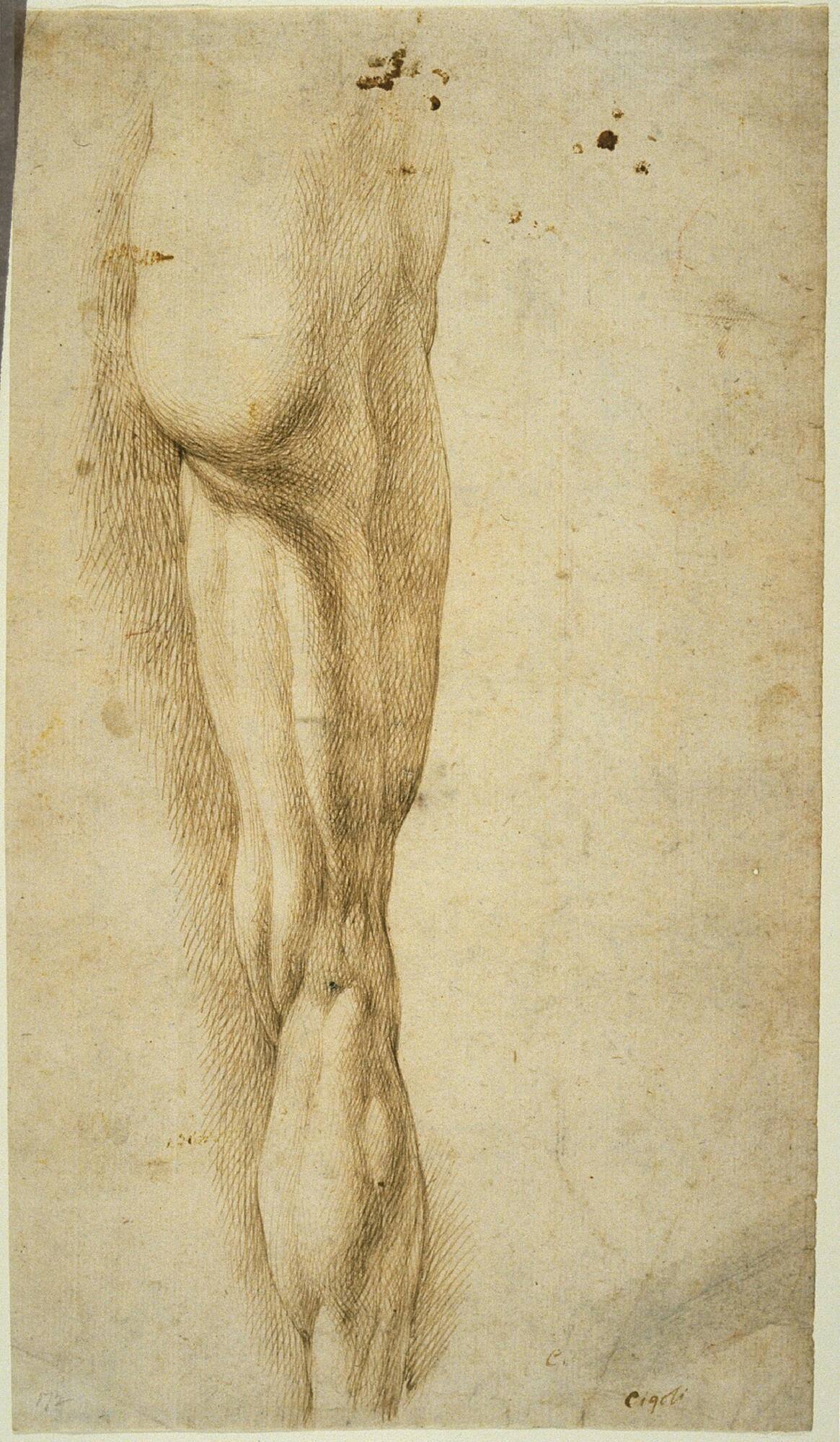Attributed to Lodovico Cardi, called Il Cigoli
(Italian, 1559–1613)
Anatomical Study of a Leg

Object Details
Artist
Attributed to Lodovico Cardi, called Il Cigoli
Medium
Pen and ink on laid paper
Dimensions
11 1/2 x 6 1/2 inches (29.2 x 16.5 cm)
Credit Line
Acquired through the Membership Purchase Fund
Object
Number
76.104.005
Whether this study records a living model or a cadaver is difficult to tell. However, drawings like (…)
Whether this study records a living model or a cadaver is difficult to tell. However, drawings like this one indicate the prevalence of anatomical study in later sixteenth century Italy. Since 1563 and the foundation of the Florentine Drawing Academy (the first of its kind in Europe), aspiring artists had been required to attend an annual dissection in homage to the great Michelangelo who had famously learned the finer points of drawing from studying cadavers.
Il Cigoli was a prominent artist and architect in Florence, credited with creating the first wax anatomical model of the human body in 1598: a half life-sized figure shown without its skin and based on the dissection of cadavers. Cigoli believed that both students and full-fledged artists should routinely study anatomy and incorporate naturalistic effects into their art.
(“Undressed: The Nude in Context, 1500-1750,” text by Andrew C. Weislogel and presented at the Johnson Museum February 9-June 16, 2019)












